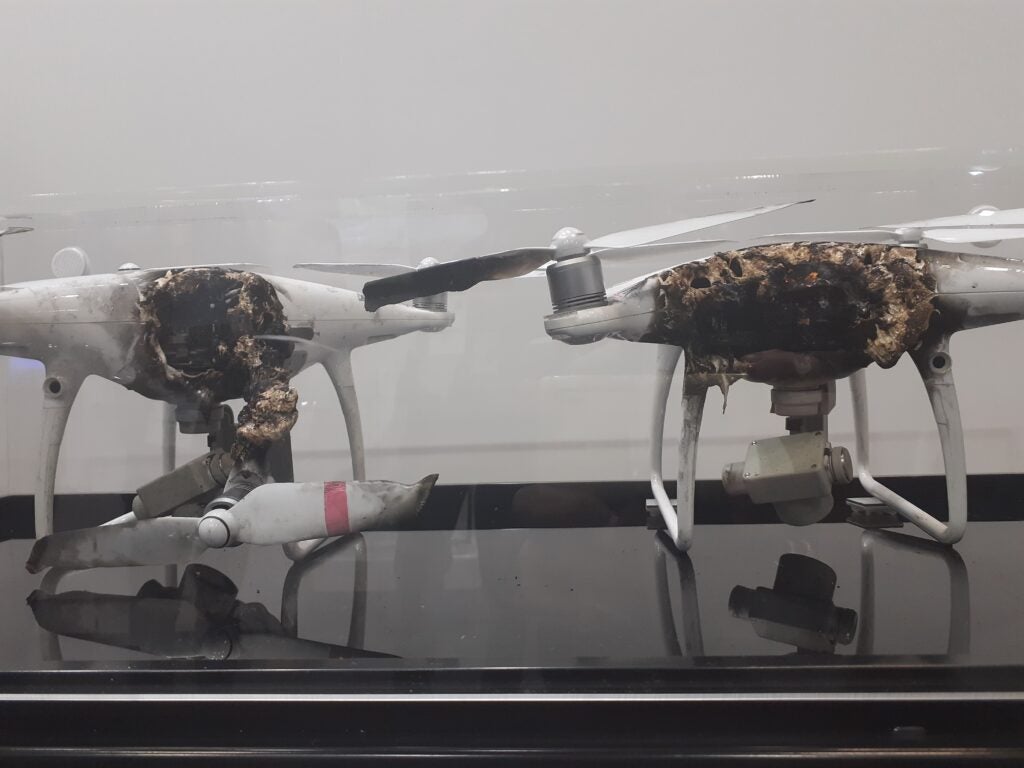DSEI Japan 2023: A Look at the Latest Counter-Drone Solutions
At the DSEI Japan 2023 integrated defense event held in Chiba from March 15-17 March, drones and counter-UAV systems were at the center of attention. Companies from across Japan and the world presented drones built for every imaginable mission- from large, long-range platforms intended for strategic reconnaissance to tiny quadcopters intended to aid individual squads and platoons.
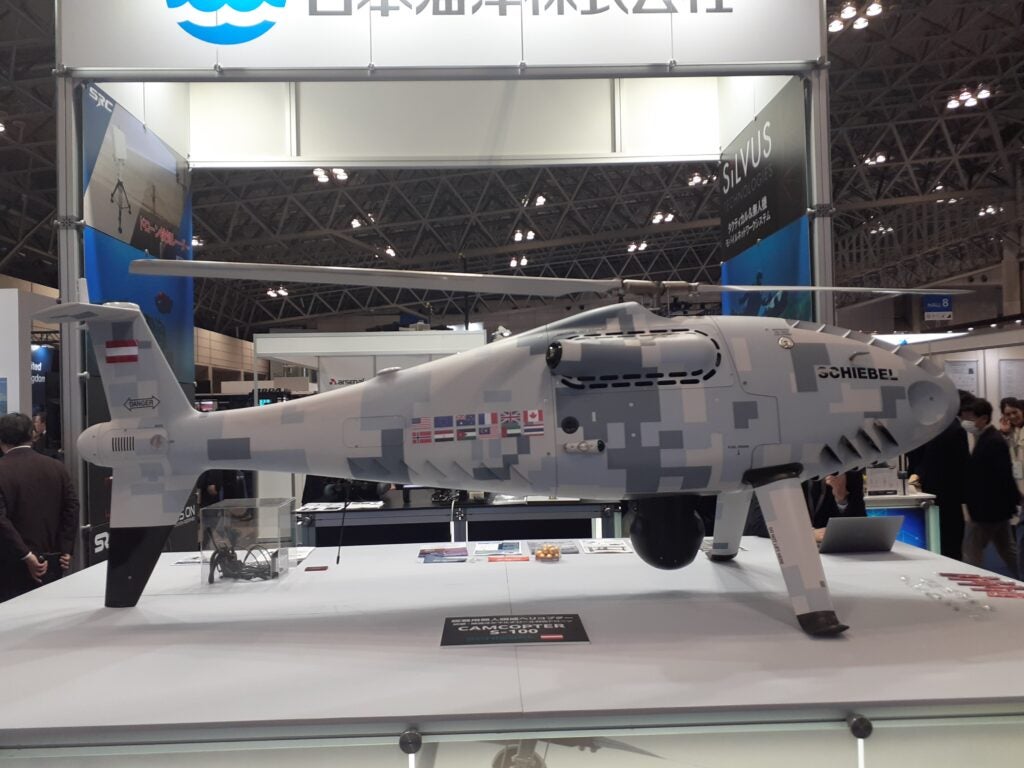
With the focus on drones, and their proliferation in the war in Ukraine, it is no surprise that systems designed to counter these drones were just as common; anti-drone jammers, anti-drone guns, anti-drone lasers, anti-drone drones and a large assortment of other anti-drone systems were presented by dozens of companies. Interest in these systems did not limit itself to just the military; a high-ranking official from the Tokyo metropolitan police visited the event to explore counter-drone options for the police force. A Toshiba representative listed a significant number of civilian use cases: “airport security, border security, prison security, power plant security and stadium protection”.
In the conferences which accompanied the arms exhibition, drones were also a major topic and nearly every officer speaking about the lessons of the Ukraine war and the future of warfare, be they from Europe, America or Asia, mentioned them in some way. Ukrainian Lieutenant-Colonel Andrii Rodionov, who was invited to speak at the event, talked about Ukraine’s experience with fighting with and against drones in the war. According to Rodionov, drones now provide critical support to almost every branch of the armed forces- infantry, artillery, medics, engineers, special forces and many more. They “multiply effectiveness of each individual combat unit”.

In response, the armed forces are adapting. “Every headquarters has intelligence”, Rodionov stated. “We are trying to plan how to effectively use our assets with the lower possibility of it being hit but in order to fulfill the mission”. The armed forces are also being forced to operate drones in increasingly contested spaces as both Russians and Ukrainians use overlapping countermeasures from short-range jammers and rifle fire aimed at drones on the frontline to more powerful jammers and air defense systems situated a few kilometers to the rear. This is forcing all sorts of tactical and technical adaptation by drone operators:
“[We are] using different kinds of modulations and spread spectrum methods. Data encryption, improvement of integrated inertial guidance systems, and developing algorithms for what UAVs have to do in the situations of loss of lead or in other situations. Using directional antennas on the drone control stations to gain better signal strength.”
Rodionov’s main conclusion was that on the modern battlefield, gaining an advantage in the drone space is critical to outperforming the enemy and requires not just effective use of drones but also effective use of counter-drone systems
“Almost all combat actions from fire contact to strategic operations are followed by drone applications. […] counter-drone systems are as necessary as drones themselves. In order to get advantage both components must be developed.”
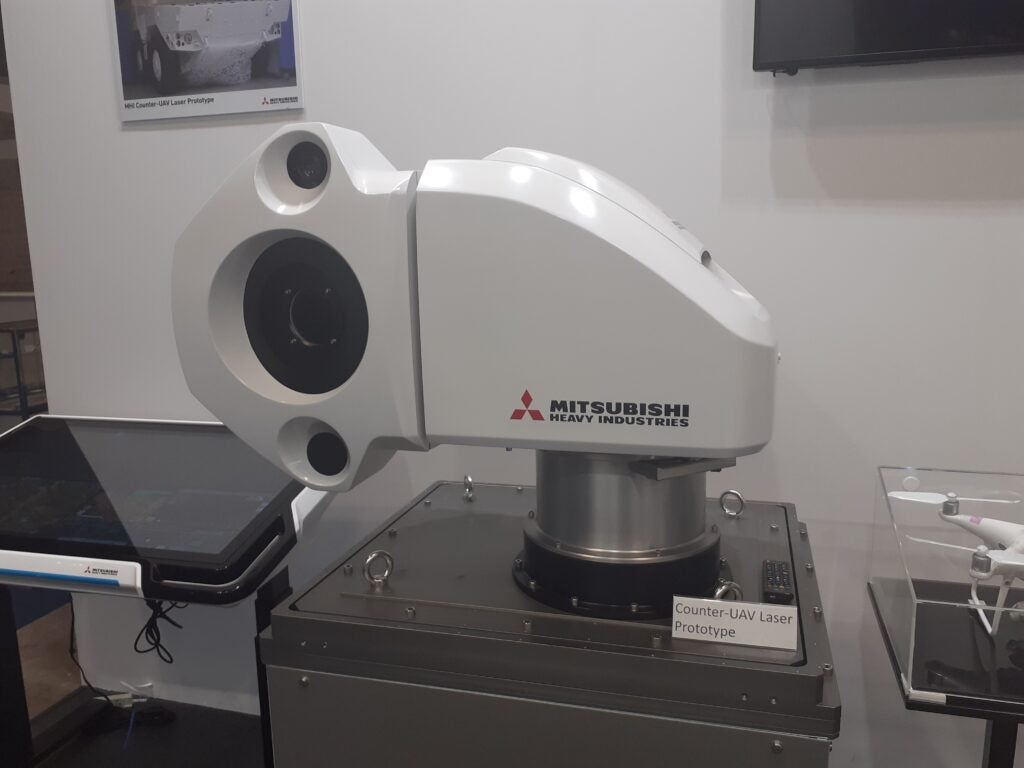
Back on the showroom floor, the cutting edge of counter-drone systems was on display. Arguably the most exciting of these were counter-UAV lasers; both Mitsubishi and Kawasaki presented real prototypes of their designs. Mitsubishi’s laser is currently capable of taking down drones up to 1.2km away in just 2-3 seconds; two charred drones were displayed next to the laser system and the results speak for themselves- no drone is ever going to fly again after two seconds of contact with Mitsubishi’s laser.
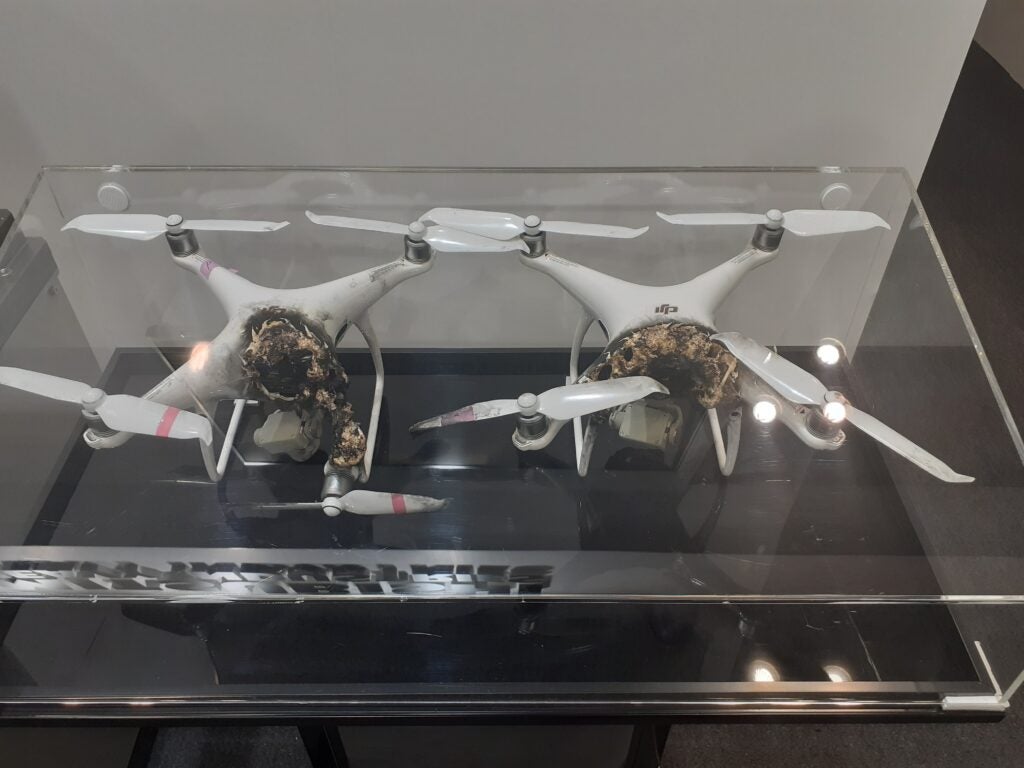
The Mitsubishi system is meant to be mounted on vehicles, perhaps the Type 16 MCV or Type 96 APC, to protect it against drones. It comes with its own generator meaning the vehicle will never be unprotected due to an empty battery. And, according to one Mitsubishi engineer, the company is working to make the effective range even longer.
While Mitsubishi’s laser is being made with the military exclusively in mind, the same is not true for Kawasaki. Mounted on what looks like a military-grade golf-cart, there system is meant to be deployed on an independent platform capable of escorting and supporting a wide variety of units. The first platforms will be marketed to the military but Kawasaki hopes to offer a civilian security model a few years after that.
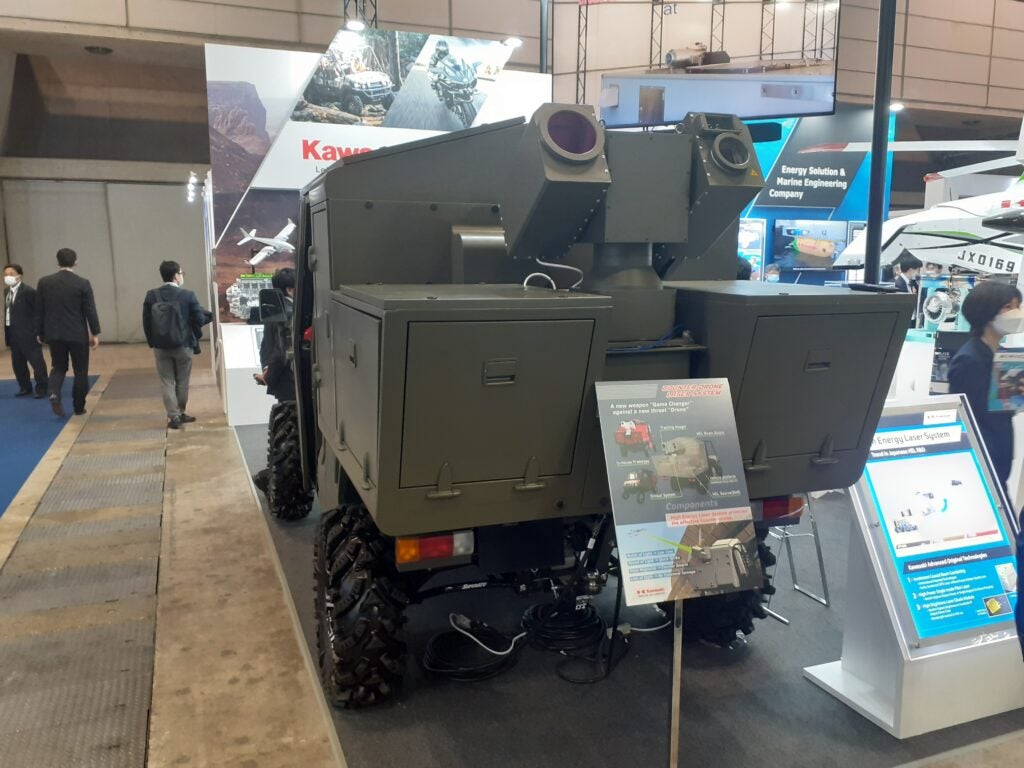
Another type of system on display was the drone-hunter drone. Some, like South Korean company Dymstec’s “Drone Hunter M” comes equipped with a jammer module that interferes with drones up to 100 meters away. Meanwhile, Toshiba and Taiwanese company Tron Future construct drones which can take down other drones using nets.
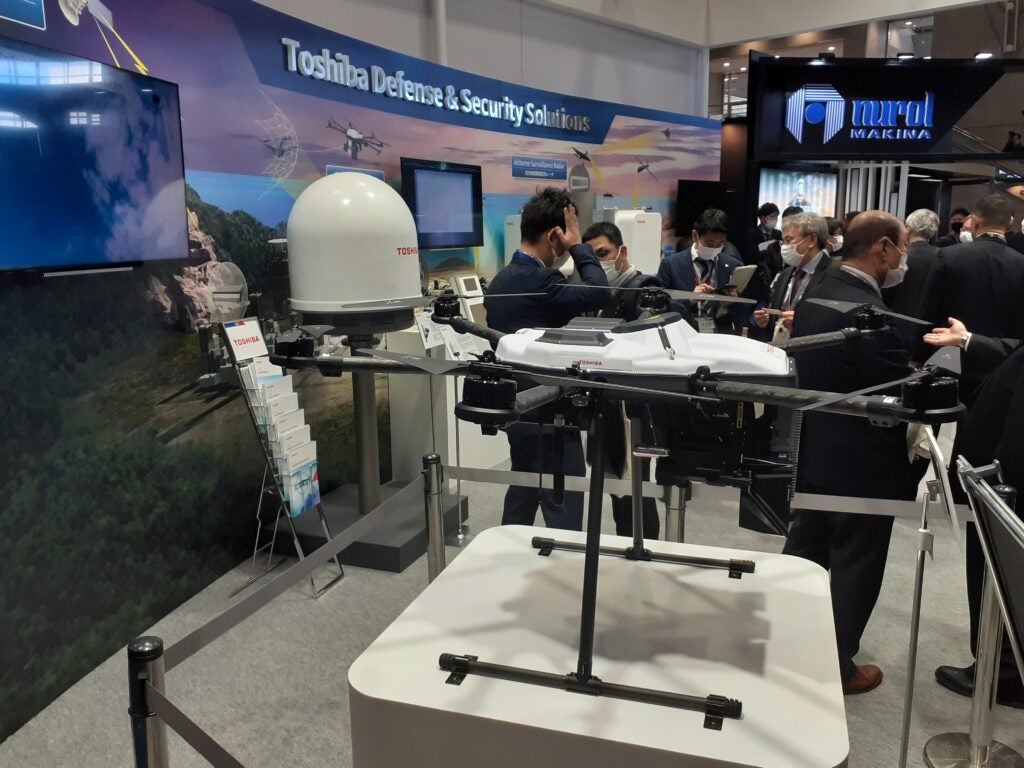
Drone jammers were also in the spotlight and included everything from handheld, visual-range drone jammer guns to larger tripod-mounted jammers effective at ranges of up to a few kilometers. In the jamming department, some of the most impressive solutions were presented by Australian company Drone Shield whose “DroneGuns” were used to take out four drones at the inauguration of Brazilian President Lula da Silva in January this year. The company’s new DroneGun Mk3 was on display at DSEI Japan and resembled an oversized pistol straight out of science-fiction; it would fit in well with the Dominator from Psycho-Pass or the kit used by the Mobile Infantry from Starship Troopers. Yet despite appearances, the system weighs only 2.14 kg with battery- comparable to some models of the Desert Eagle. It typically takes about 1-2 seconds for the drone gun to force the drone into its loss of link protocol. Moreover, the system is fitted with a standard military battery that is interchangeable with other commonly used systems like the Harris PRC 152 which gives it additional points on the logistics side.
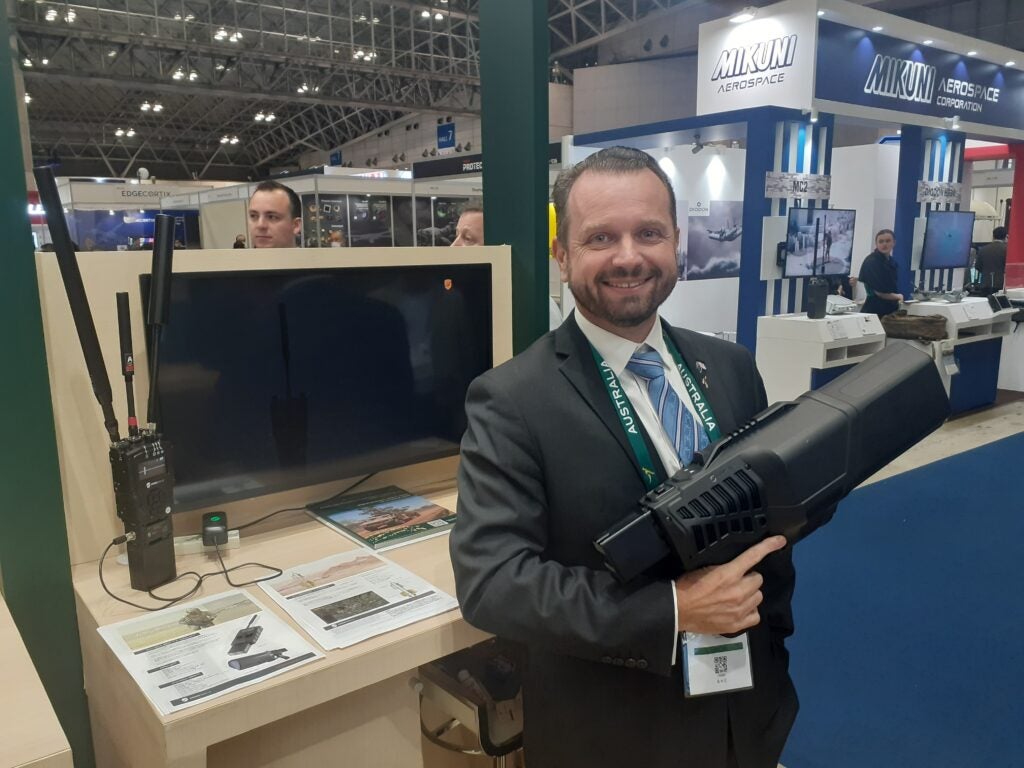
The best anti-drone systems don’t rely on just one method of taking down and detecting drones. Rather, they use multiple. Sensors can use cameras, infrared, radar and radio-frequency sensors to ensure that a drone can always be caught by something regardless of the weather conditions and what countermeasures the drone uses. Jammers try to cover the maximum number of bands possible and are best used as part of a larger system integrating platforms which can counter drones through other methods- such as the previously discussed nets or some sort of kinetic projectile. Thus, many of the companies present at DSEI Japan offering counter-UAV solutions were not there to sell just individual platforms but rather entire systems integrating sensors, jammers, drone-hunting drones and other solutions. Dymstec, Toshiba and Drone Shield were all offering integrated networks of mutually reinforcing platforms.

